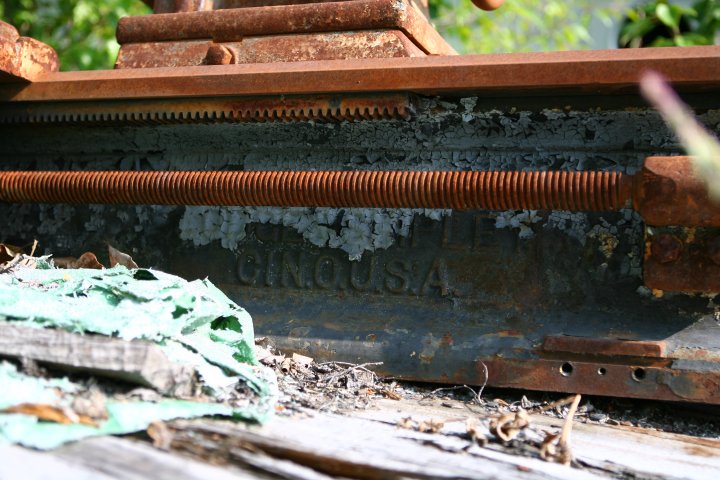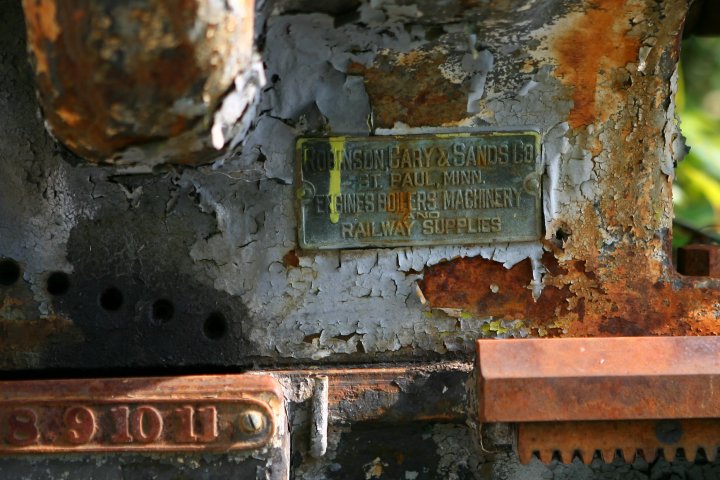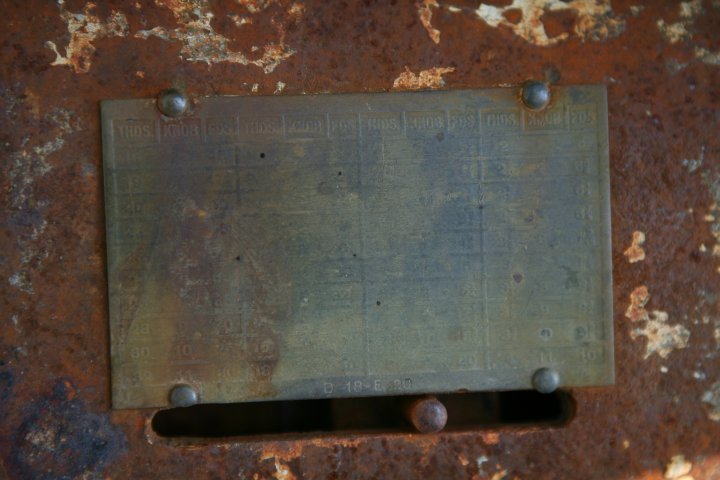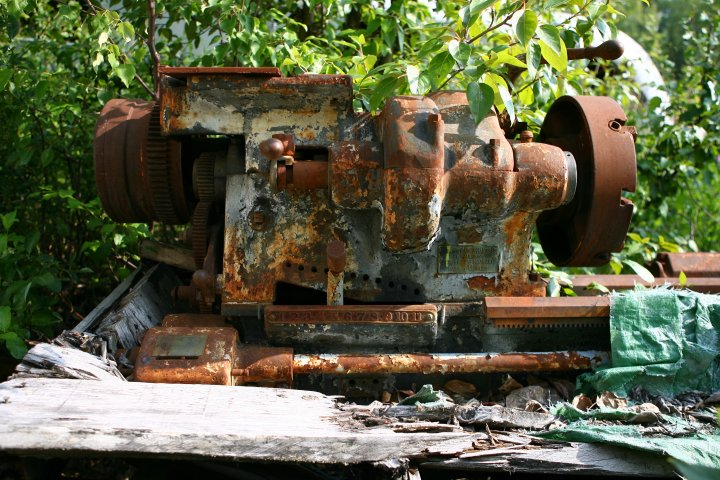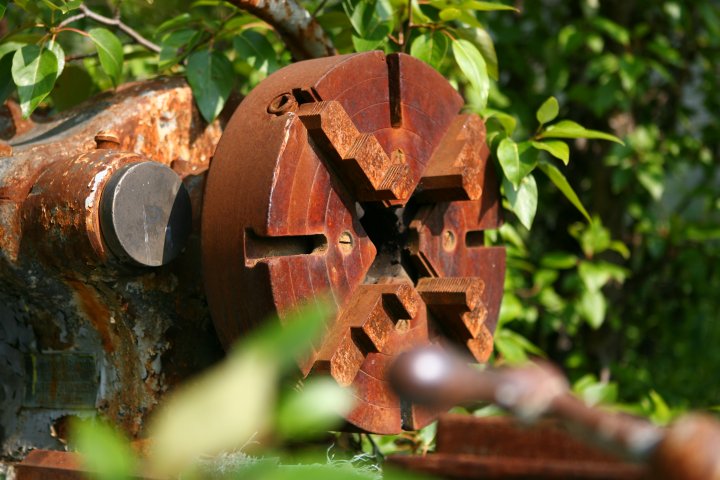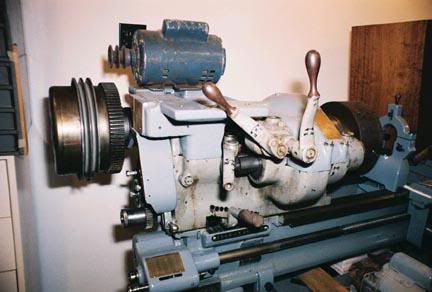DocsMachine
Titanium
- Joined
- Jan 8, 2005
- Location
- Southcentral, AK
Can anyone tell me what make and model this is?
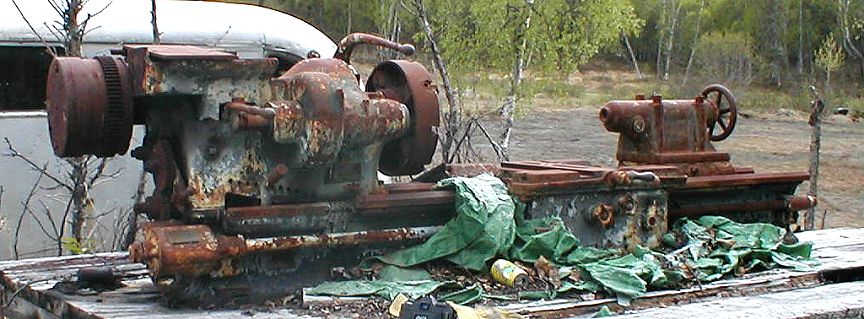
And any chance anyone has a pic of a complete version? And specs, if possible- swing and centers, spindle bore, number of probable speeds, approximate age/date-of-manufacture, etc.
It's obviously missing the entire cross-slide and compound, the carriage handwheel is broken off entirely, and it's been sitting out in the weather for untold decades. The spindle does not turn, but the leadscrew selector at least moves a bit.
There's a plate, obviously not original, roughly bolted to the top that looks like a later motor-mount conversion. I'm not sure how it's driven, unless that drum on the end is a fancy flat-belt pully/clutch or something.
I might be able to salvage it. The land has been apparently abandoned- there's no structures, just this junk, and evidence it's all been there since a brush fire. The bed the lathe is on (it's the flatbed of a truck) is partially burned through, and some of the other junk and cars also show minor to extensive fire damage.
Supposedly, the last brush fire to run through here was sometime around 1968, so it's not unreasonable to assume it's all been there at least that long. We're hoping to find whoever owns the property, but it may just be owned by a bank or some people that now live out of state or something.
Doc.

And any chance anyone has a pic of a complete version? And specs, if possible- swing and centers, spindle bore, number of probable speeds, approximate age/date-of-manufacture, etc.
It's obviously missing the entire cross-slide and compound, the carriage handwheel is broken off entirely, and it's been sitting out in the weather for untold decades. The spindle does not turn, but the leadscrew selector at least moves a bit.
There's a plate, obviously not original, roughly bolted to the top that looks like a later motor-mount conversion. I'm not sure how it's driven, unless that drum on the end is a fancy flat-belt pully/clutch or something.
I might be able to salvage it. The land has been apparently abandoned- there's no structures, just this junk, and evidence it's all been there since a brush fire. The bed the lathe is on (it's the flatbed of a truck) is partially burned through, and some of the other junk and cars also show minor to extensive fire damage.
Supposedly, the last brush fire to run through here was sometime around 1968, so it's not unreasonable to assume it's all been there at least that long. We're hoping to find whoever owns the property, but it may just be owned by a bank or some people that now live out of state or something.
Doc.


 You can also see the top of my 35mm Minolta camera at the bottom of the frame. I didn't have a tape with me, but I'm roughly guessing the chuck is at least 12", probably closer to 14", with probably as much as an 18" swing. Rough guess of anywhere from 48" to 56" or so between centers. I'd say the whole thing is at least eight feet long.
You can also see the top of my 35mm Minolta camera at the bottom of the frame. I didn't have a tape with me, but I'm roughly guessing the chuck is at least 12", probably closer to 14", with probably as much as an 18" swing. Rough guess of anywhere from 48" to 56" or so between centers. I'd say the whole thing is at least eight feet long.